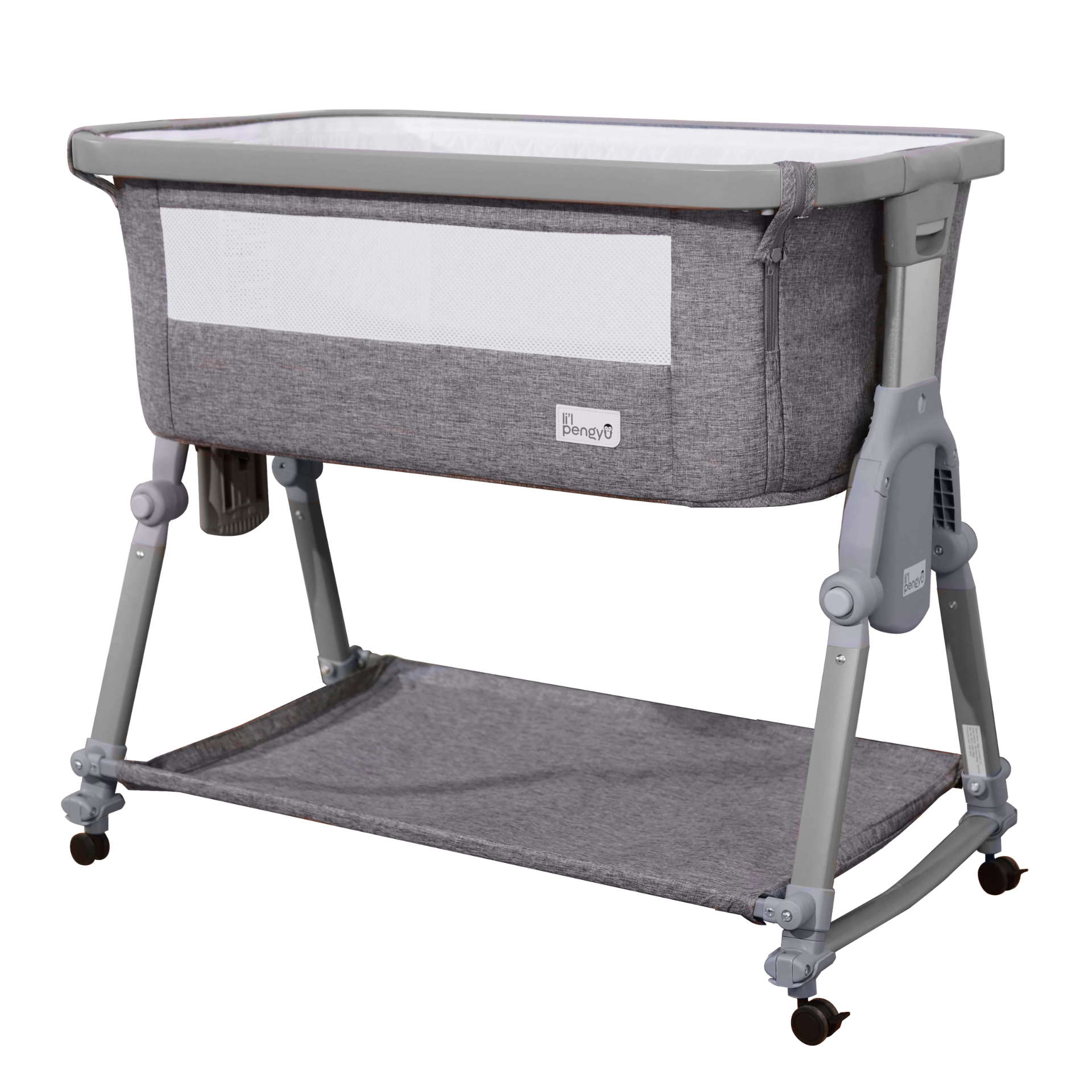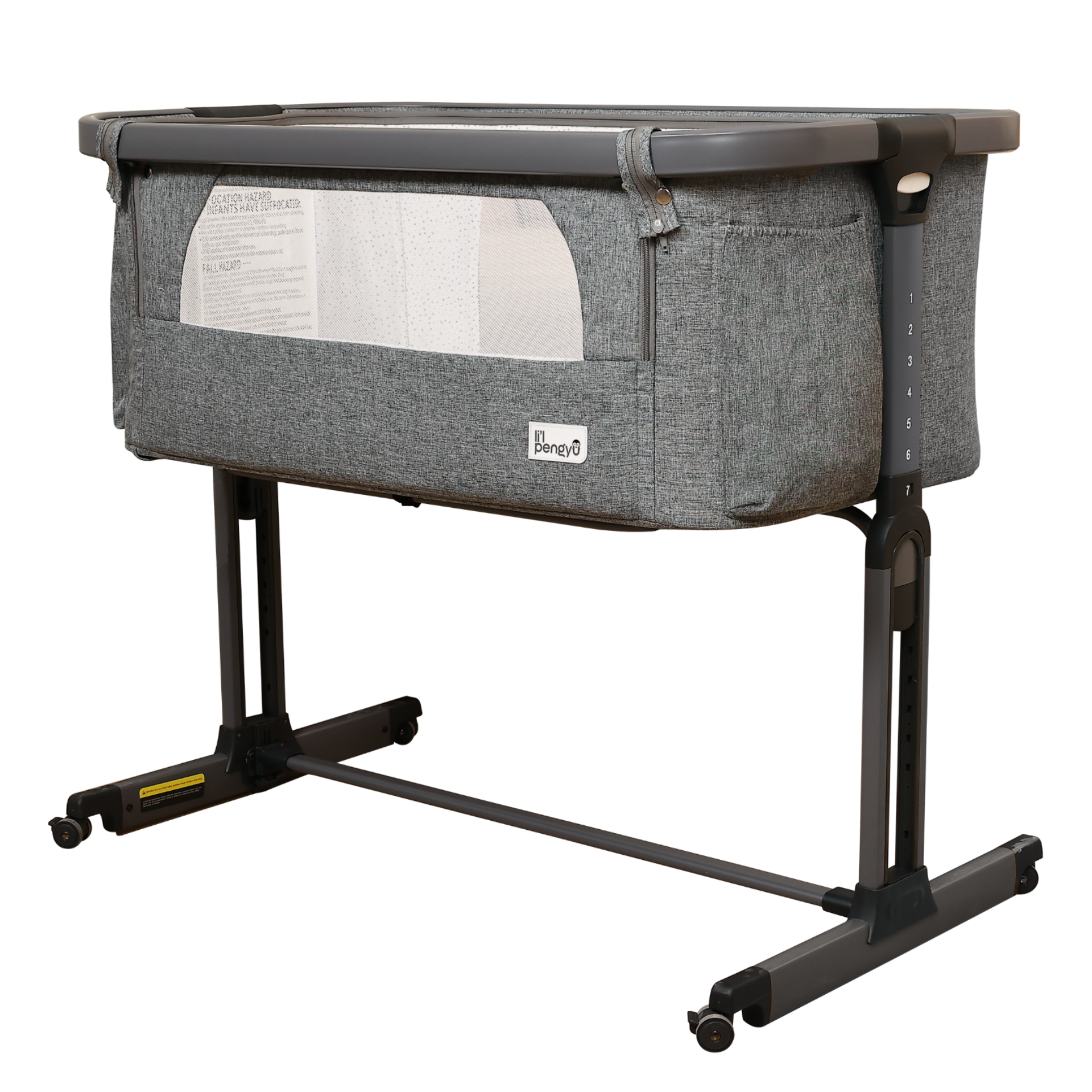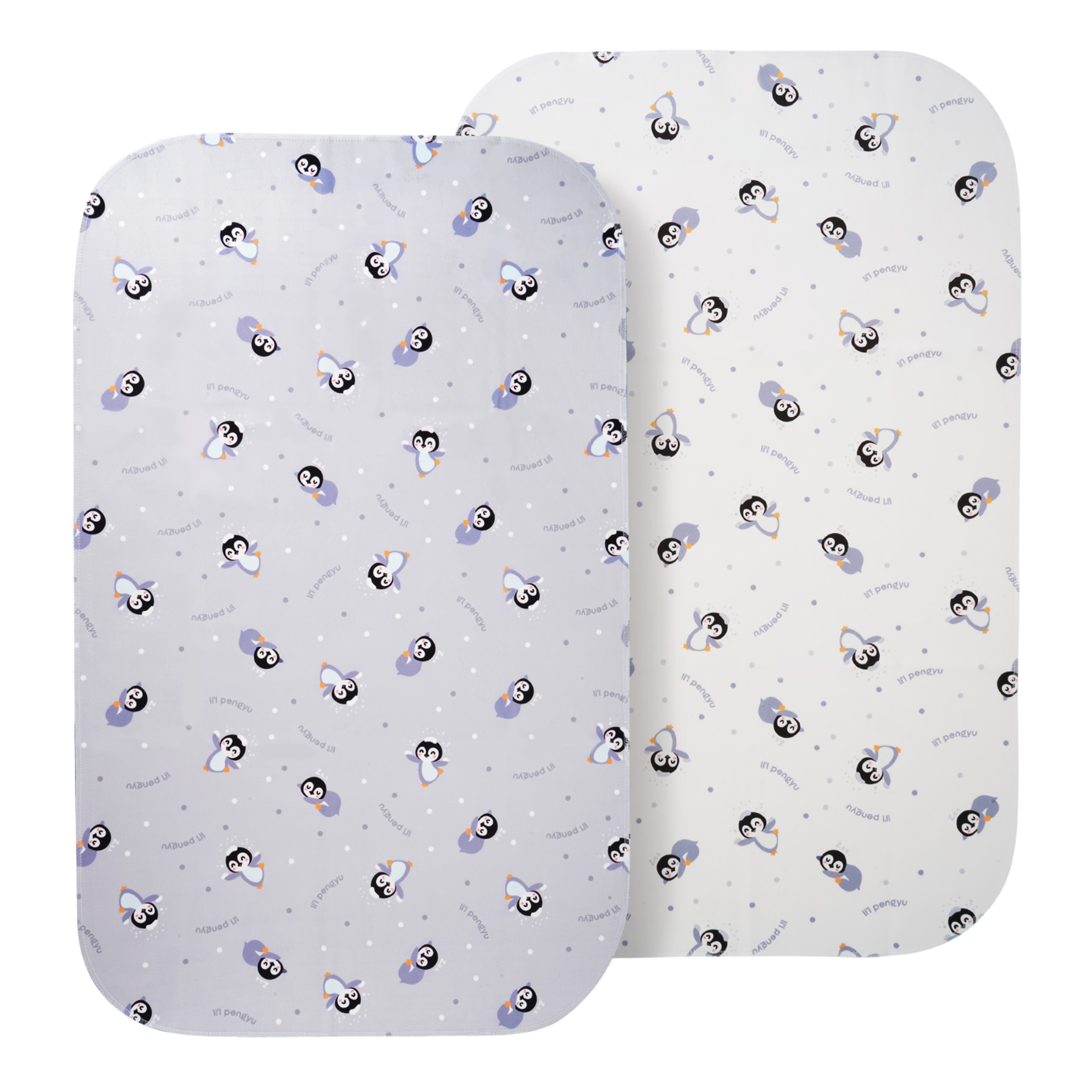Newborns need a safe and comfy place to sleep. But should you choose a bassinet or a crib? Here is your guide to understanding the differences.

There’s a lot of confusion about whether new parents should get a bassinet or a crib for their newborns. While many parents think a crib is the obvious and wiser choice, oftentimes a smaller bassinet is the perfect solution when you have a cramped space or your baby is really young.
You always want your newborn to be comfortable and safe. Babies spend a lot of their time sleeping, so choosing the right bed is a must. You may have space restrictions depending on your housing situation, which impacts the option you choose. Or, you’re not ready to commit to a crib, which can be a major purchase.
Which type of bed is right for your newborn? Here’s an overview of a bassinet vs. crib and when to choose each of them.
What is a crib?
Cribs are often the go-to option for parents. They can typically be used a lot longer than a bassinet, so you don’t have to worry about getting something new when your baby gets a little older. Some cribs can even be converted into beds for toddlers. Cribs can be pretty large and can hold around 40 to 50 pounds.
One issue with cribs is that they take up a lot of space. They can be really heavy and bulky in the home, making smaller spaces feel cramped. A crib isn’t very easy to move, which is a pain if you decide you want it in another room.
Cribs can be the right option if you’re looking for something for longer-term use. They’re more of an investment since they’re usually more expensive than bassinets.
What is a bassinet?
Bassinets are smaller than cribs, lighter in weight, and much more portable. New parents can move the bassinet from room to room so the baby can sleep wherever is most convenient. Bassinets also have lower sides that can move easily. That ease of use is especially nice in the middle of the night when feeding needs to happen. Hoods or covers are often included on bassinets, which can be pulled over the newborn while they’re sleeping.
Because bassinets are smaller, they can’t be used as long. Your baby will outgrow the bassinet, sometimes in just a few months, and many of these beds have weight limits of only 20 pounds or less.
When to use a newborn bassinet vs. crib
Both bassinets and cribs are used by parents around the globe, each with their pros and cons. How do you choose the right option for your baby? Here are some key factors when you’re trying to make the call:
1.Your space
First, consider the spaces within your home and where your baby will sleep. If things are pretty tight, you may want to opt for the bassinet for your newborn. They take up less space and are nice for when you’re sharing a room with your baby.
According to the CDC, the crib or bassinet should go in your bedroom first, since newborns should sleep in their parents’ rooms for at least the first six months of life. This guideline may impact the type of bed you get, since the baby may be sleeping in your room temporarily before shifting to the baby’s room. You may want to have a bassinet for those first months.
2. Mobility
Some parents may decide that they want the baby to sleep in the same place every day for consistency’s sake. They may want to invest in a crib right away to provide a solid, more permanent bed for their baby. But others may love the flexibility that a bassinet gives them, especially after coming home from the hospital. They can move it around to different spaces they need to be in, even transporting it to the homes of family members.
3. Safety
Bassinets usually have soft cloth siding while cribs have wooden bars on the sides. You may think that this means bassinets are safer for newborns, but both types of beds are actually safe for your child. Just make sure you choose a high-quality product that meets applicable safety requirements. Check to make sure the bassinet or crib you choose is up to ASTM and Consumer Product Safety Commission (CPCS) standards.
4. Co-sleeping
Some bassinets have a co-sleeping feature that allows you to sleep next to your baby and bond with them without the risk of suffocation. They also allow new moms to get more rest since they don’t have to get up as much at night for feedings. While cribs are sturdy, they’re also more inflexible and make accessing your baby during the night more difficult.
5. Affordability
Most parents must also factor in cost when selecting the right crib or bassinet. Cribs are more expensive, but they’re used longer, so they may be worth the investment. Bassinets are more affordable, so they’re perfect for newborns when parents don’t want to spend a lot on a bed just yet.
How to find the right bassinet or crib
Both bassinets and cribs provide a safe, comfortable place for your baby to rest. Choosing between a bassinet vs. crib for your newborn means assessing your budget, the space in your home, and your need for mobility. What’s most important is that you select a product that is high-quality and meets safety guidelines.
Our products at Li’l Pengyu are made carefully and thoughtfully for your newborn. Our Li'l Pengyu Safer Sleep Bassinet and Li'l Pengyu Bedtime Bliss Bassinet are CPSC and ASTM certified, and the super lightweight mesh design with zippers on the exterior ensures baby is safe while sleeping. There’s no assembly required for our bassinet, and the detachable side panel makes it easy for middle-of-the-night nursing. We use soft, breathable, and hypoallergenic cotton material with a sturdy frame design.
Learn more about our high-quality baby products by reaching out to Li’l Pengyu now.






